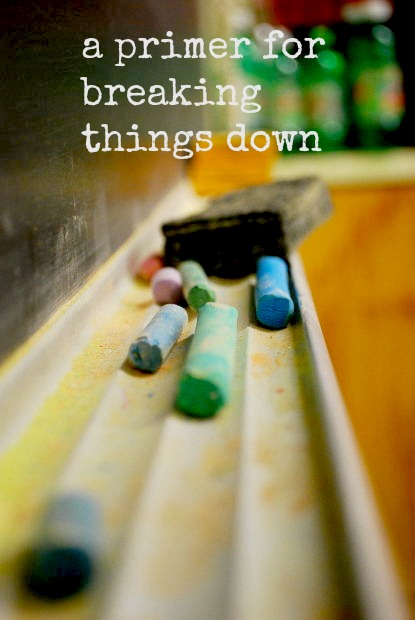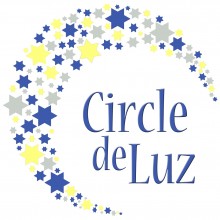I am in the midst of a cool new project. Want to know what it is?
I am writing medical school curriculum.
Pitiful me who was asked by the American Red Cross not to come back to any blood drives because I faint and am more trouble than my blood is worth is writing medical school curriculum.
And clumsy me who caught her pants on fire in Chemistry 2 class in high school is writing medical school curriculum.
And chatty me who got kicked out of biology class for being disruptive in high school because I whispered the answer to a review question when my friend didn’t hear the teacher is writing medical school curriculum.
Oh, the irony.
But, don’t worry too much after reading my tales of scientific mishap, you are still safe out in the world. Because I am not writing any science curriculum. I am writing reflection curriculum for these medical students so that, hopefully, we inspire really self-aware and thus more wholly compassionate physicians. And because I believe getting really clear about who you are, what you are experiencing and how to grow from it, what you have to offer, and how you are meant to offer it is an urgent part of living with passion and on purpose, this project is really thrilling to me.
And, yet, I am writing medical school curriculum and that is a kinda huge concept.
A big enough one to stop me in my tracks because I don’t REALLY know how to do it when I say it like that. But I don’t say it to myself like that and, thus, I am able to make it happen. And the thing I am using to make it happen isn’t some big secret. The thing I do to make writing medical school curriculum or anything else possible is to whisk the concept away from its great big scary title and break it down into little tiny pieces that are totally not daunting.
Over the years, I’ve been asked a lot about how to break a project down. And, truth be told, breaking things down into manageable pieces is one of the things that my Passion. Purpose. Plunge clients most appreciate about their retreats. And breaking things down is a game changer for motivation and completion so this week’s spark is a primer for breaking things down.
Step 1: Gather information. Once a new idea strikes you, get started by just gathering information. Ask people you know what they know. Google search out the wazoo. Check out books. Get a file folder (if paper is how you roll) or set up an Evernote file and gather everything. Talk to the people with whom you are partnering (if that is part of it) and understand their roles and expectations.
Step 2: Brain Dump. Write out every single thought or idea you have right now.
Step 3: Consider What Results You Want. In the wise words of Stephen Covey, begin with the end in mind. What result are you looking for? Do you want to write a book? Clean out your attic? Get a promotion? Redo your kid’s bedroom? Write medical school curriculum? Whatever it is, know exactly what your final “product” needs to be. In my case, I have three final products when I am all done—a curriculum that the students will have in their hands to guide them through a year of the reflection curriculum as well as two workshops that I will lead with them—one at the beginning of the year and one at the end of the year. Now, I know what I am working towards.
Step 4: Name Your Deadline. There may be a hard deadline (I know exactly what day I am walking into med school and delivering this workshop and I have to have the curriculum done by then) or it may be a self-imposed deadline (I want to have the attic done by September 30th). We often resist self-imposed deadlines but deadlines really do help us get stuff done. Try it.
Step 5: Break It Into Pieces. What all needs to be done to make this project happen? If you are redoing your son’s bedroom, you might need to buy a new bed, paint an old dresser, find bedding, find a rug, create some art, and go through old clothes. Whatever project you are eyeing, break it down into every piece that you can identify. Then talk about it with someone else and see if they have more pieces to suggest.
Step 6: Create a Timeline. Alright, now that you know your deadline and all the pieces, apply it to a timeline. One of the reasons why projects become overwhelming is because we try to do too much with them in a small period of time. I find that spreading things out a bit, when I have the time, keeps my energy going through completion. So, give yourself breathing room in between tasks (if you want to get your kid’s room done by September 30th, maybe one week you work on bedding, the next on a rug, the next on furniture, the next on art, etc).
Step 7: Apply It To Your To Do Lists. Now, you gotta make the pieces happen. If your goal one week is to get the bedding figure out, maybe you look at options on Monday and Tuesday, let your child pick from some narrowed down options on Wednesday and order it on Thursday. When I am working on a book project, I literally figure out how many pages have to be written each week day to meet my deadlines with a little bit of cushion and then I list “write x pages” on each day’s to do list.
Step 8: Enjoy the Results!
What project are you working on right now? How are you planning for it in a way that will help you get it done? What are your secrets for getting things done?



